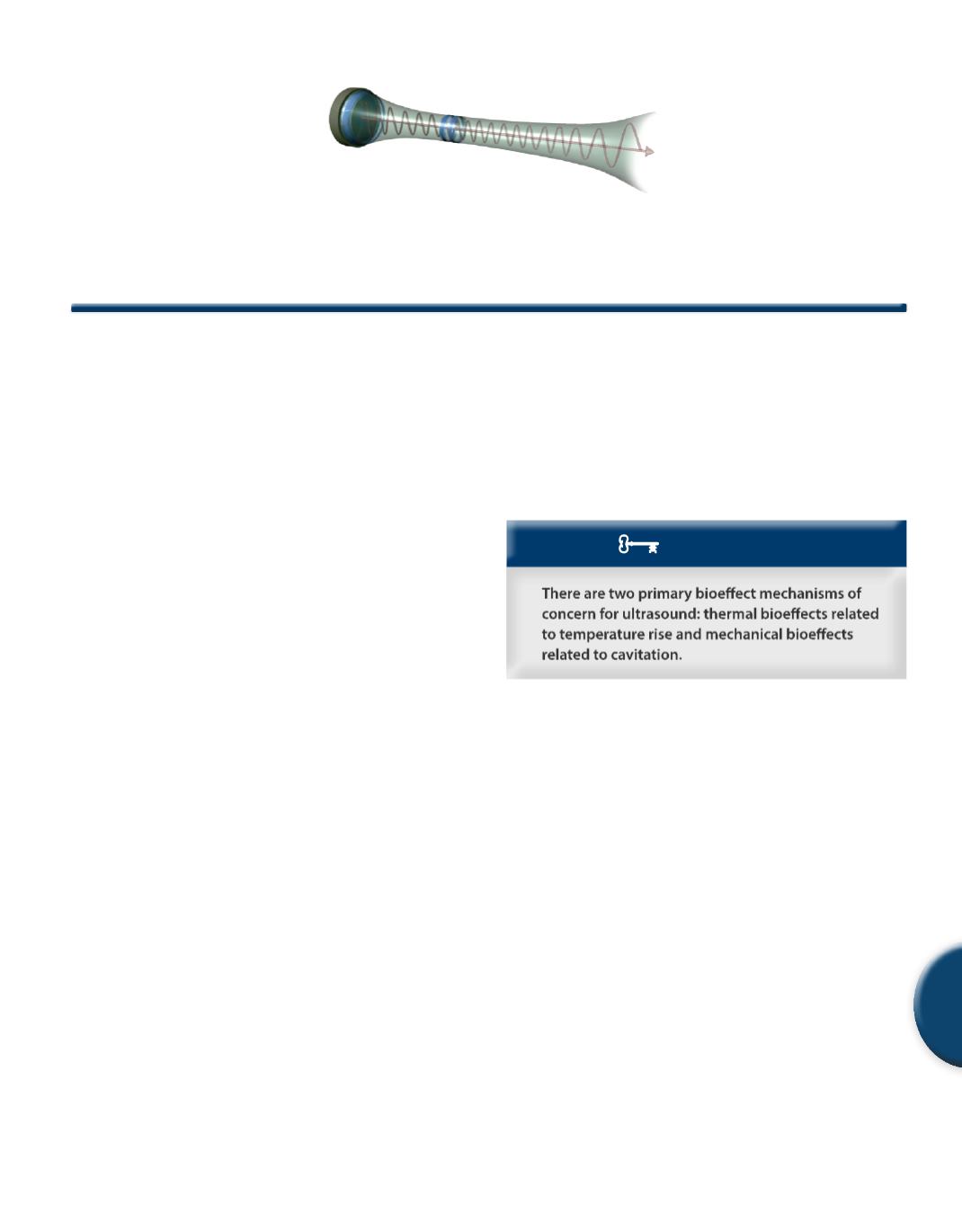
Bioeffects
Chapter 9
Chapter 9: Bioeffects
301
9
Overview
The foundation for discussing bioeffects has been developed
throughout the entire book. In Chapter 2, Waves, we learned that
sound is amechanical wave and that all waves are a cyclical transfer-
ence of energy. We also learned that as the wave propagates,the wave
physically interacts with the medium causing changes within the
medium. These changes are measurable in four different quantities
called the acoustic variables. Recall that the changes are related to
pressure,temperature,particle displacement,and density. Chapter 2
also introduced the general concept of acoustic power and intensity.
In Chapter 3,Attenuation, we learned that the principal form of at-
tenuation for soft tissue is absorption. Recall that absorption is the
conversion of some of the mechanical wave energy into heat within
the body. As we will learn, absorption and absorption rates are key
indicators of the risk of inducing a thermal bioeffect. Additionally,
the concept of non-linear frequency dependent absorption was
introduced.
In Chapter 4, Pulsed Wave Operation, we learned different ways of
timing the transmitted pulse so as to achieve some longitudinal
resolution. Within Chapter 4,the foundation was laid for discussing
temporal issues as relates to bioeffects. Specifically, the concepts
of the duty factor, frame rates, and scanned versus non-scanned
modalities, were introduced and explained.
In Chapter 5, Transducers, we learned about transducers and beam
shapes. We learned that the beam is narrowest at the focus and
hence, the highest intensity always exists at or shallower than the
focus. Great effort was taken to consider how the intensity of the
beam changes with convergence and divergence.
In Chapter 6, System Operation, we learned about signal-to-noise
ratio and how the output power increases the beam intensity,thereby
increasing the signal-to-noise ratio. We also learned about receiver
gain, and improving “apparent” signal-to-noise.
In Chapter 7,Doppler,we learned about the non-scannedmodalities
of spectral Doppler as well as the differences between PW and CW
Doppler. In Chapter 7, the intricacies of how color is produced as a
scan of non-scanned packets was also explained.
As should be evident from summarizing most of the previous chap-
ters, the content we have learned to this point is almost all related to
the risks and mechanisms of bioeffects. When all of these facts are
considered together there is a very solid foundation for discussing
bioeffects.
KEY CONCEPT
1. Mechanisms of Bioeffects
The term“bioeffect” refers to an undesired biological change to tis-
sues as a result of interaction with the insonating beam. The fact
that the potential for bioeffects exists should have been evident with
the very description of sound as a transport of energy. Since energy
can perform work, the possibility that the work performed leads to
adverse biological situations is well within the realm of reasonable
speculation. Since there are myriad interactions and uses of ultra-
sound, we also expect that there is more than one mechanism by
which damage could potentially result. Fortunately, the list of these
effects can be categorized according to themechanisms which create
them. There are two principal mechanisms for creating bioeffects:
thermal and mechanical.
1.1 Thermal Bioeffects
Although extremely complex in terms of identifying, measuring,
and accurately predicting thermal bioeffects, understanding the
basic mechanism of thermal bioeffects is relatively simple. Recall
that absorption is a conversion of the sound energy into heat. If the
temperature in a region rises too high,metabolic breakdown results,
and cellular damage can occur.


